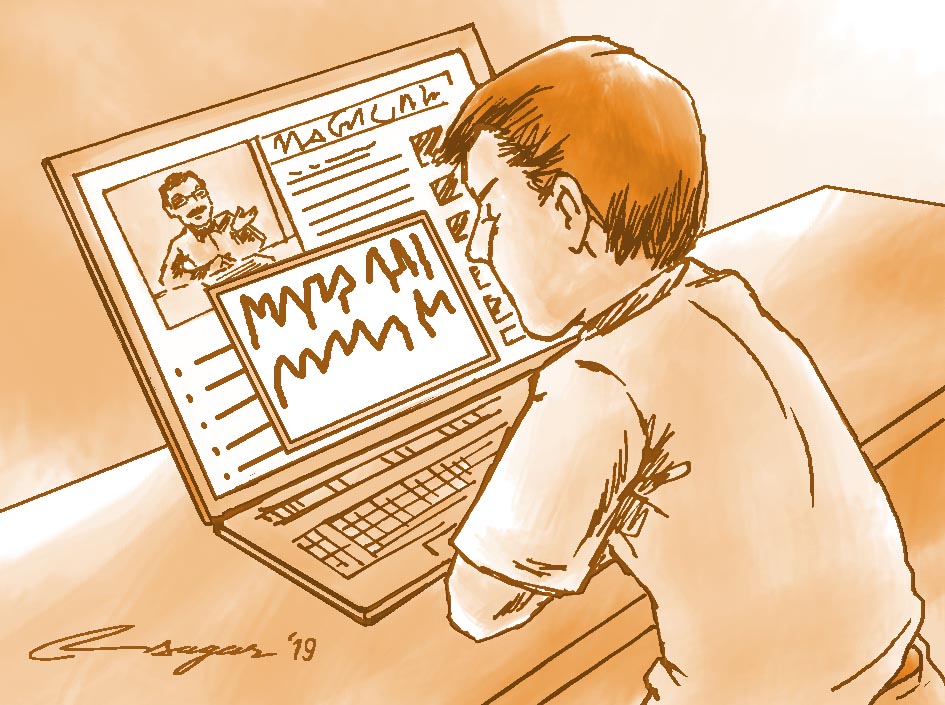Technology for the disabled: Maximising opportunities
Technology always doesn’t need to be complex. A simple device can act as an effective technology. For example, the white cane has been a simple technological device, whose use enables a person with visual disability to move independently
Technology has become an indispensable part of the present global community. Be it in order to overcome the challenges of life or to compete in the speedy world, technology plays a crucial role. Access to appropriate technology, indeed, increases one’s efficiency and creates adequate opportunities for each and every individual in the society. And it is even more required and relevant for persons with disabilities for their overall development and empowerment as it opens the door for their equality, non-discrimination and participation in the society.
Talking about the importance of technologies, a historical event for the people with disabilities is the adoption of the United Nations Convention on the Rights of Persons with Disabilities (UNCRPD) in December 2006. Article 21 of the convention strongly focuses on the proper use of information and communication technologies for the right and welfare of people with disabilities.
Technologies, no doubt, have become significant tools for persons with disabilities in maximising their opportunities, helping them break barriers, enhancing their creativity and productivity and enabling them to engage with the mainstream of society. Actually, technologies and technological devices can help people with disabilities in different sectors, such as communication, mobility, access to information and in performing everyday works.
Obviously, the need of technologies and technological devices may vary from one person to another, depending upon the kind and nature of their disability. For example, a blind needs a talking technology while a person having problems in using fingers or without both hands may require a screen touch or voice operating technology.
Today a visually-impaired person is not so disadvantaged when it comes to using a computer. Using the various screen reader software programmes like Jaws, NVDA, Thunder, Super Nova, Speak Synthesizer and Narrator, any blind or visually-impaired person can listen and work through all the icons appearing on the computer screen. Similarly, a low vision or partially sighted person with the capacity to read larger fonts can use magic software to increase the size of the object appearing on the computer screen.
It may be recalled here that Nepali low vision engineer late Him Prashad Gautam had also developed a screen reading software called “Dristibachak” that gives the Nepali blind access to the Nepali font. Another technological device for the visually-impaired person is the refreshable Braille display, which may be used as an alternative to the screen reader. The electronic device called Braille memo has some facilities to record and display the recorded text in Braille printing. Another computer software technology called the “Natural reader” can also read and record the scanned pages of a book in natural human voice, and it has brought significant advantages specifically for the visually-impaired students.
Use of mobile phone technology is also growing fast in the modern world. It has indeed become an indispensable part of each and everyone’s daily life. Different talking software programmes like “Talk” or “Mobile Speak” can be installed to make all the commands of the mobile speak. Mobiles today have a voice operating system that can dial a phone with the help of human sound. The change in display colour and vibration helps the person with hearing disability to find calls and short messages in such mobile phone technology.
However, many new and latest communication and information technologies are still beyond the reach of majority of the world’s disabled community, living particularly in the developing countries. And in the absence of adaptive or assistive technological tools, they have been deprived of opportunities in the areas of education, health and employment that have rendered them unable to function on an equal footing with their normal counterparts in the society.
Technology always doesn’t need to be heavy or complex. A simply designed device or mechanical instrument can act as an effective or supportive technology. For example, the white cane has been a simple technological device, whose use enables a person with visual disability to move independently to his/ her destination.
Obviously, technology plays an eminent role in enhancing the morale and motivation of the people with disabilities to lead life independently. Proper use of technology not only escalates one’s efficiency to perform his or her daily and professional assignment but also allows persons with disabilities to actively participate in the society and nation-building process.
It is, therefore, equally important that the government, civil society, donors, the NGOs-INGOs, media and the general people also join hands to remove the barriers that the people with disabilities have been facing over the years. In this respect, the constructive and facilitating role of the Ministry of Education, Science and Technology, Nepal Academy of Science and Technology and social entrepreneurs will be vital in coordinating the efforts between the different stakeholders to develop various appropriate and improvised technologies to ensure full and active participation of people with disabilities in the society.
KC is president of Guardian Association of Blind-Nepal






